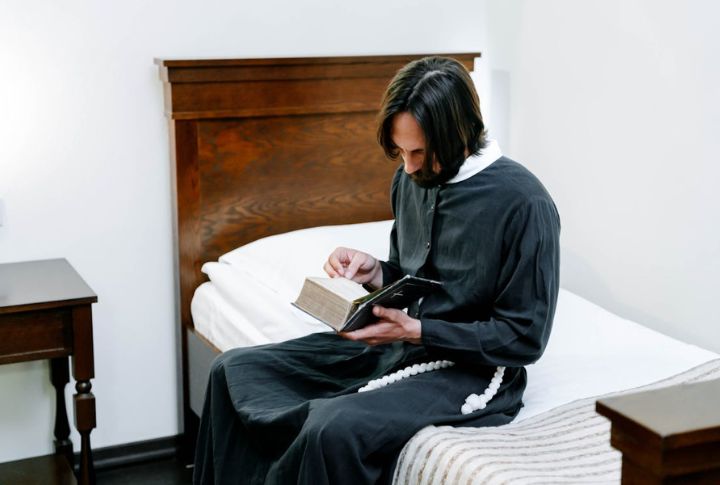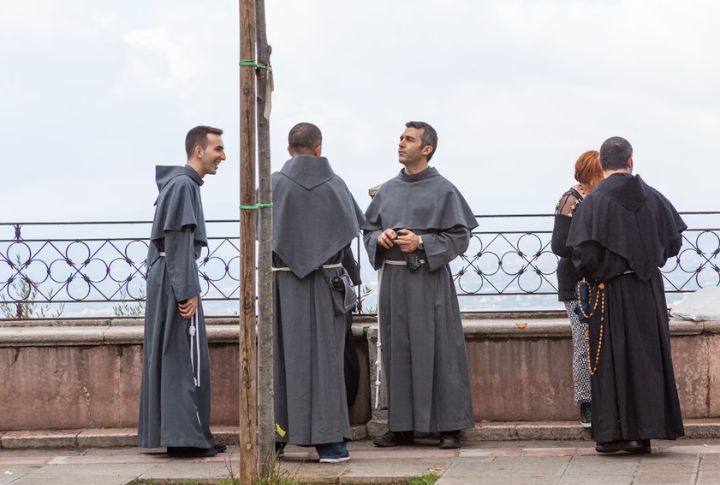
Christian monks have lived by unique rules for centuries, shaping quiet lives of prayer and purpose. These traditions may seem unusual today, but each one carried deep meaning. Ready to step inside the monastery walls? Here are 10 rules that defined their way of life.
Vows Of Silence To Cultivate Inner Peace

In many monastic communities, silence was a spiritual discipline. Benedictines and Trappists observed structured periods of complete quiet, sometimes lasting days. Some monks used sign language to communicate. Breaking silence without cause was considered disobedient, as silence trained the mind to listen deeply.
Waking Up Before Sunrise For Prayer

Life in a monastery often began around 2 a.m., long before sunrise. Vigils marked the start of eight daily prayer sessions outlined in the Rule of St. Benedict. Sleep deprivation was intentional and seen as an act of devotion. Cold chapels and candlelit prayer defined the early hours.
Living With No Personal Possessions

Ownership had no place in monastic life. All belongings, even clothes, were shared or distributed by superiors. The vow of poverty discouraged pride and attachment. Monks who kept anything for themselves, no matter how small, risked correction.
Manual Labor As Sacred Duty

Not all monastic devotion was spent in prayer. Daily tasks like farming, brewing, or copying manuscripts were considered sacred. The Rule of St. Benedict linked labor to spiritual health, warning that idleness harmed the soul. Manual work became a way to strengthen both body and spirit.
Fasting Every Week

Wednesdays and Fridays were regular fasting days, not just during Lent. Meals often excluded meat, dairy, or oil. In certain seasons, monks ate only once a day. Fasting was a spiritual tool, not a health trend. Paired with prayer, it helped resist temptation and increase focus.
Sleeping Fully Clothed For Readiness

Comfort wasn’t the goal. Monks slept fully clothed, ready to rise instantly for nighttime prayers. The Rule of St. Benedict forbade undressing to sleep. Beds were often no more than straw mats or wooden frames. This was structured to promote vigilance and discipline.
Rotating Leadership To Prevent Ambition

Monastic leadership came with limits. Authority was seen as service, not status, and roles like cellarer or porter changed hands often to keep the ego in check. Leading meant taking on responsibility with humility, not claiming power. Anyone who misused their position could face penance or removal from the community.
Receiving Guests As Christ Himself

Hospitality was taken seriously. Monks greeted guests with blessings and food and even washed their feet. All visitors, including beggars, were welcomed with respect. Guest quarters were sometimes more comfortable than the monks’ own. Welcoming strangers was a sacred command.
Copying Books By Hand As Devotion

In quiet scriptoria, monks copied texts by hand, treating them as spiritual labor. They preserved religious and classical works with extreme care. Mistakes were corrected using pumice or scraped vellum, and illuminated manuscripts took years to complete.
Complete Obedience To The Abbot

Authority inside the monastery was clear: the abbot led, and everyone else obeyed. No matter their personal opinions or seniority, monks submitted fully. Delayed or refused obedience could lead to serious consequences. This hierarchy aimed to build humility and keep spiritual life on track.

